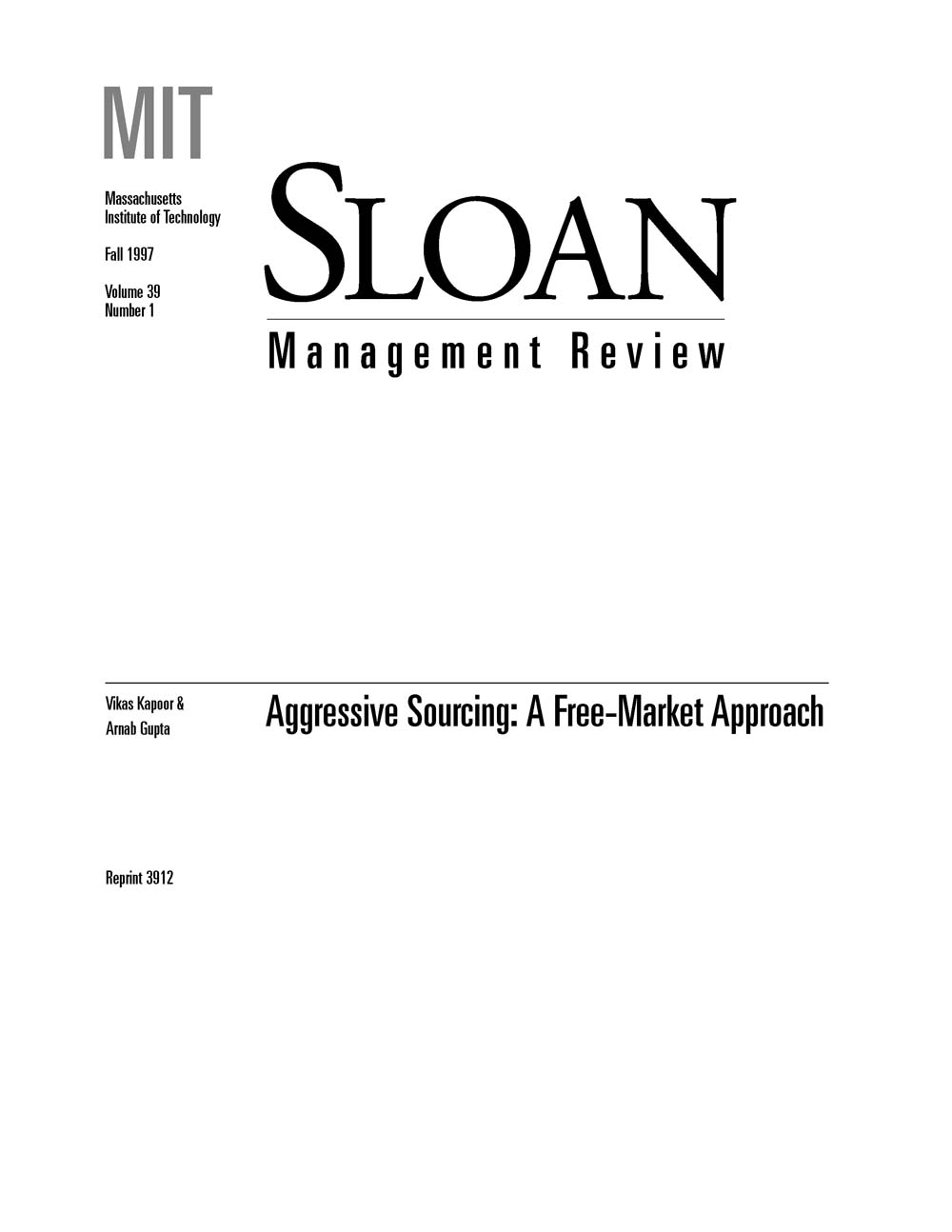
Aggressive Sourcing: A Free-Market Approach
Indirect purchases represent a large part of a company’s costs, yet many companies have neglected such expenditures, sheltering them from rigorous competitive scrutiny in favor of supplier partnerships. The authors suggest that companies should examine their indirect purchases more closely.
First they delineate indirect purchases — those not directly associated with end products or services — into five major expense clusters: advertising and marketing, technology, overhead, human resources, and those specific to the business such as store fixtures or collection agencies. Three problems prevent most companies from managing these purchases effectively: (1) inadequate information — companies have confusing, inaccurate data about indirect purchases; (2) insufficient resources — the people negotiating purchases lack skill or have other incentives in making purchasing decisions; (3) improper techniques — few companies gather sufficient information or solicit competitive proposals.
Kapoor and Gupta propose five approaches for improving purchasing programs that are rooted in a competitive, free-market view:
1. Measure pragmatically. Managers should be extremely selective and focused when defining pricing data for purchasing.
2. Assign resources selectively. Companies should increase the resources assigned to indirect purchasing and clearly define the roles of people assigned to administer supplier relationships.
3. Demystify business requirements. Companies must establish precise quality requirements for indirect purchases.
4. Clarify the pricing basis. Lax pricing practices work to the buyer’s disadvantage. In order to compare prices, the buyer must establish discipline in pricing by creating and enforcing a standard vocabulary.
5. Leverage the free market. Buyers must be willing to use free-market competition to reduce costs and must take business away from suppliers if necessary.
The five approaches run counter to the prevailing “partnership” purchasing model, according to the authors. In a supplier partnership, they suggest, companies give up their right to investigate alternative sources by making a commitment to work with a partner through good and bad. Such partnerships may be appropriate when there are few viable alternatives or when changing suppliers would be difficult. Otherwise, they say, companies should establish free-market competition as their standard operating procedure and form partnerships only on an exception basis.




